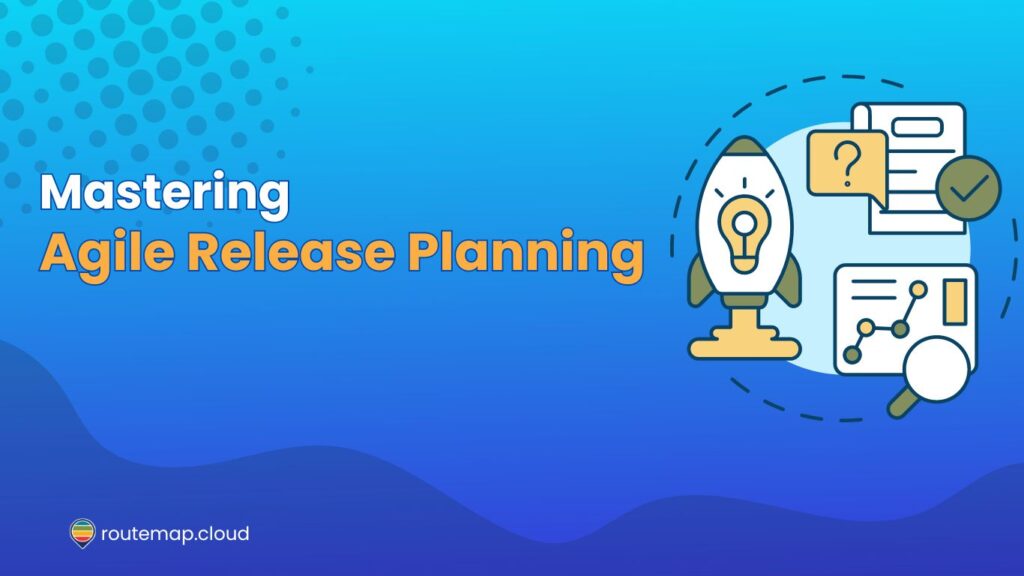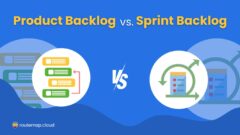For every project, you need to make a plan to keep things moving in the correct direction. However, the most well-made or carefully crafted plan still needs to be changed, and that is where Agile release planning comes into place.
Agile release planning is a crucial aspect of Agile project management methodologies, revolutionizing software development and project management.
In this article, we will go through the fundamentals of release planning in Agile, including what it is, why it is important, and how to build one. And to top it all off, there will be some best practices to help you keep things right.
What is release planning in Agile?
Agile release planning is a product management method where the team plans the product’s release over a period of time. In other words, teams can build and create incremental releases of a product rather than major releases.

The primary goal of agile release planning is to ensure that the development team delivers valuable and high-priority features to customers or stakeholders at regular intervals. This typically takes place in short and iterative cycles known as sprints or iterations.
Moreover, it involves determining what features, enhancements, or fixes to include in the next release of a product or software application.
Why use Agile release planning?
In a nutshell, it contributes to the success of Agile software development projects and the delivery of value to customers or stakeholders. Additionally, Agile release planning is a dynamic approach that significantly enhances a project’s ability to respond to change.
This method allows teams to swiftly adapt to alterations in requirements, priorities, and market conditions, ensuring to maintain the product’s relevance and value. Such flexibility is crucial in today’s fast-paced business environment, where staying ahead of market trends and user expectations is key to success.
Another reason for using release planning in agile is transparency, which is also a fundamental aspect. This approach promotes clear visibility of work items, priorities, and progress, enhancing collaboration, informed decision-making, and alignment among team members and stakeholders.
Such transparency is vital for building trust within the team and ensuring that everyone is working towards the same goals. Moreover, this can nurture a collaborative environment where every team member can contribute effectively to the project’s success.
How to build a release plan in agile
It is not easy to build an effective agile release plan. It requires careful planning that takes place long before you start putting release dates on your calendar.

You can follow these steps and see if they fit you and your business.
1. Define your product vision and roadmap
The first thing you need to do is to establish a clear vision for the product. You do not expect to build an effective release plan in Agile without knowing what you are trying to achieve, do you?
More specifically, this includes understanding the customer’s needs, the market scenario, and the unique value proposition of the product. Based on this vision, you can create a high-level product roadmap that outlines the major features or capabilities to be developed over time.
2. Set up your product backlog and prioritize features
After defining your product vision, you can move on to setting up your product backlog. This backlog is dynamic and will evolve as new information and feedback are received.
You can create a product backlog containing a list of features, enhancements, and bug fixes planned for the product which will be prioritized later on.
Then, it is time to work on the feature prioritization. You can work with stakeholders, or other team members, to prioritize these product backlog items based on factors like customer value, business impact, and technical feasibility.
And don’t forget to utilize the prioritization methods or framework to make the job easier with fewer arguments.
3. Hold a Sprint planning meeting
Now, it is the time to hold a planning meeting. This is where team members select items from the product backlog and priority list that they can commit to completing during the sprint.
Additionally, this meeting involves the development team and stakeholders. You can also ensure that the relevant departments can evaluate the prioritization of deliverables and features on which stakeholders agree.
If you don’t know where to start, here is something you can begin with:
- Plan Releases: Decide how many releases there will be within a given timeframe and what each release will include. This involves breaking down the product backlog into smaller, manageable segments that can be completed in a single release cycle, typically ranging from a few weeks to a few months.
- Define Sprints: Within each release, further divide the work into sprints, which are short, time-boxed periods (usually 2-4 weeks) where a set of backlog items are developed and completed. Assign specific user stories or tasks to each sprint.
4. Evaluate and refine your Agile release planning
At this step, you can review the outcomes against the goals set for that release. You can use the insights gained to inform the planning of subsequent releases, continually refining and adjusting the approach based on learning and feedback.
And don’t forget to maintain constant communication with stakeholders throughout the development process. Regular updates, demonstrations of completed work, and discussions about changes or challenges ensure that stakeholders are actively involved and informed.
Best practices for agile release planning
Successful Agile release planning is crucial for delivering value to customers and stakeholders flexibly and efficiently.
Here are some of the best practices to help achieve that success.
1. Establish a clear product vision
You can begin your Agile release planning process with a well-defined product vision. This vision serves as your product’s ultimate goal, articulating the significant impact you aim to achieve in the long run.
Additionally, it should be concise, inspiring, and aligned with your organization’s broader objectives. That is why you should collaborate with key stakeholders, including product owners, customers, and executives, to shape and refine this vision.
More importantly, you must remember that a product vision is not static. Instead, it should adapt to evolving market conditions and customer feedback while remaining compelling and relevant.
2. Set specific release objectives
Effective release planning in agile hinges on having clear and measurable objectives for each release. These objectives provide a sense of direction and purpose.
Besides, you should also ensure that your release objectives stick to the SMART criteria, making them Specific, Measurable, Achievable, Relevant, and Time-bound. This allows you to keep your team focused on delivering value to customers and aligning with overarching business goals.
Regularly evaluating whether release objectives are met allows for continuous improvement in your planning process.
3. Prioritize your backlog wisely
Successful Agile release planning requires thoughtful backlog prioritization. This process involves deciding which features or user stories to tackle first based on their significance and impact.
Moreover, you can employ various prioritization techniques, such as the MoSCoW method or Cost of Delay, to make informed decisions. It is crucial to strike a balance between addressing immediate customer needs and pursuing long-term strategic objectives.
Engage stakeholders actively in this prioritization process to ensure that your team’s efforts align with customer expectations and business priorities.
4. Create a visual release roadmap
Craft a well-structured release roadmap to provide a high-level, visual representation of your planned releases, major features, and key milestones over time. This roadmap serves as an indispensable communication tool, helping both internal and external stakeholders understand your product’s evolution.
Additionally, you can include target release dates, significant enhancements, and strategic directions. You should also update the roadmap regularly to reflect changes in priorities, scope, or market conditions.
As a result, it can be a guiding document that keeps your team focused on the bigger picture and ensures alignment between development efforts and organizational goals.
5. Define a Minimal Viable Product (MVP)
It is important to incorporate the concept of the Minimal Viable Product (or MVP) into your Agile release planning. An MVP represents the smallest features or functionalities that can deliver meaningful value to users.
Then, you can prioritize MVP features for early releases to gather valuable user feedback and validate assumptions while avoiding feature overload. Releasing an MVP allows your team to iterate and enhance the product incrementally.
As a result, it can reduce the risk of building unnecessary features and accelerating time-to-market with a product that genuinely addresses user needs.
6. Conduct effective sprint planning
Sprint planning is a crucial element of Agile release planning, occurring before each sprint. During these sessions, the team selects a set of backlog items to work on in the upcoming sprint.
Therefore, you must ensure that you break down these selected items into manageable tasks, clarifying responsibilities, and estimating effort. Sprint planning also helps guarantee your sprint backlog aligns with the team’s capacity and sprint goals, promoting a focused and achievable sprint.
It is a collaborative effort that fosters transparency mentioned earlier and shared understanding among team members regarding the upcoming work.
7. Embrace a culture of continuous learning
You can always cultivate a culture of ongoing learning and improvement within your Agile release planning process. This involves conducting regular retrospectives, where the team reflects on processes, identifies strengths, and pinpoints areas for enhancement.
Besides, you can also encourage open and honest feedback, creating an environment where team members feel comfortable sharing observations and improvement or innovative ideas.
Additionally, you can document and share these lessons across the organization to promote broader learning and knowledge sharing. This will benefit both the team and the organization as a whole.
Final thoughts
Agile release planning is an iterative, dynamic process that demands flexibility, collaboration, and a keen focus on delivering value. By understanding its principles, embracing its practices, and adapting to its challenges, teams can navigate the complexities of project management with greater ease and success.




